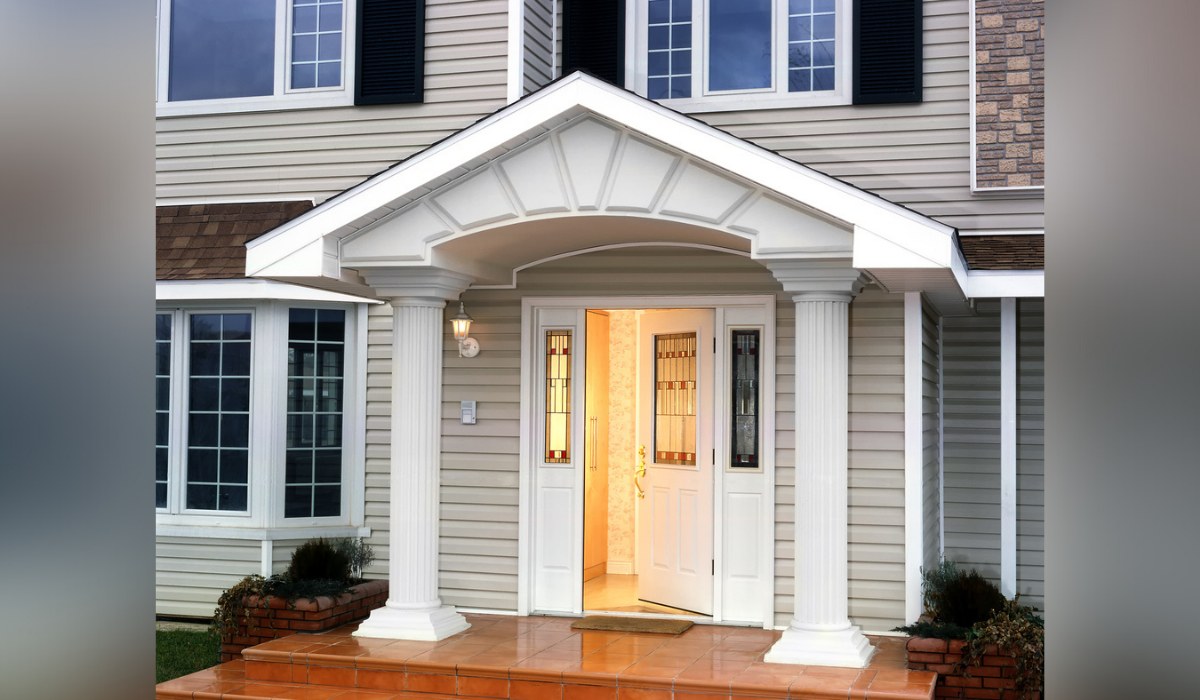Pillars provide strong support to strengthen a structure. These can help a house withstand adverse climate conditions; even earthquakes. According to Vaastu shastra, their position in the house matters for peace, harmony and good health, whereas wrongly placed pillars can cause harm to the occupants.
What are pillars and what is their purpose?
Pillars are upright columns that can support heavy loads. House pillars or columns are designed as supportive structural elements to withstand weight like the roof or the upper floors of a building. Pillars are a must if the soil is loose, the ground is waterlogged, and/or the area is earthquake-prone. Whether load-bearing or decorative, pillars are made from several kinds of materials and can be round, square, turned, fluted, or tapered to enhance a home’s style.
Why is Vastu for pillars in the house important?
Vastu Shastra is an ancient Indian science of architecture that emphasizes the need to achieve a balance between the built and natural environments. Pillars play a vital role in Vastu Shastra, as they contribute to the flow of energy in a home. Vastu pillars are thought to act as conduits for positive energy, creating a harmonious and balanced living environment. Therefore, it is crucial to consider the placement and design of pillars in accordance with Vastu principles. It is believed that pillars have the ability to attract positive energy and repel negative energy, making them an essential element of Vastu design.
Vastu for pillar at the home entrance
The entrance is where positive energies of prosperity and good health enter a house, and a pillar should not block the main gate or the entrance, or inside the main entrance. If the pillar cannot be removed then, according to Vaastu, it is advisable to change the main entrance to a more beneficial direction. One can also hang a picture of grassland or a road, and paint the pillar with a colour that gives a feeling of a vast, open area.
Also read about south west direction main door Vastu remedies
How many pillars should there be in a house as per Vastu?
Pillars and columns are built to distribute the load of the structure evenly. If constructed at the wrong place, they may have adverse effects for the occupants. It can also impact the growth of family members, according to Vastu Shastra. As per Vastu, the house pillars should be even in number as it invites peace and prosperity. So, checking the number of pillars or columns as per Vastu is one important point to consider during house construction.
See also: House pillar design ideas to add a luxurious appeal to your home interiors
Vastu for pillars at the centre of the house
Brahmasthan, as per Vaastu Shastra, is the centre of the house where all directions meet. It is a sacred and powerful area of the house. Ideally, this area should not have any structures to bring prosperity to the house. As energies are circulated to the entire house from this area, it should be free from obstructions to attract harmony and happiness. So, the presence of a can bring struggles and hardships for the residents.
Vastu remedies for pillars in the centre of the house
If it is not possible to remove a pillar from the centre of the house, it is advisable to consult a Vaastu expert. Till you find a reliable expert, here are some simple remedies:
- Crystal lotus, which stands for purity, can be used to correct the imbalance in the brahmasthan.
- Fix a copper pyramid, a copper swastika, or a pyramid shifting arrow to strengthen the centre of the house, and curb negativity.
See also: East facing house Vastu plan
Suitable distance between pillars as per Vastu
It is believed if the structure of a house rests upon multiple pillars with wide gaps, wealth may escape from the house. As per Vastu norms, it is better to close these gaps to retain wealth and good luck. To get rid of negative energy, create a wall, or storage cabinets and bookshelves between the pillar to fill the gaps.
Pillar in bedroom Vastu tips
Ensure that there are no overhead pillars in the sleeping area as the presence of house pillars could disturb peaceful sleep and lead to stress. Even sitting under an exposed beam is considered a Vaastu flaw. So, avoid keeping a study table or workstation underneath a pillar or beam in bedroom as per Vastu. Conceal overhead beams with a false ceiling. If that is not an option, keep the beam clean and decorate it well. To reduce the adverse effects, tie two bamboo flutes, with a red ribbon or cloth to the beam or the pillar.
Vastu tips for a pillars in the living room
Ideally, there should be no house pillars in the living room. If the room has a pillar, then, as per Vaastu, it is better to divide the room from the pillar and make a separate dining area or home office or TV room. Place a peacock feather on the pillar to improve good luck, and reduce the Vaastu dosha.
Vastu for pillars in the garage
According to Vaastu Shastra, the southwest corner is the ideal parking with the vehicle facing either west or south. If a porch is designed as a garage, then North or East are better directions. One can have pillars without arches around the porch but ensure that they are detached from the main house. The portico’s roof should be below the roof level of the house, and should not touch the compound wall. According to Vaastu, do not construct a pillar in the North-East direction to support the roof of the porch. Instead, use a plank roof but keep it lower than the house roof.
Vastu for pillars around the porch
In Vastu Shastra, it is recommended to have pillars around the porch without arches, as long as they are not attached to the main house. The roof of the porch should not touch the compound wall and should be lower than the roof line of the main house. However, building a pillar in the northeast to support the porch’s roof is not advised according to Vastu principles. In such cases, it is suggested to use a plank roof instead, ensuring that it is lower than the main house’s roof.
Vastu for pillars in the house: Dos and don’ts
- If you have pillars at home, always plan the placement of furniture according to Vaastu, taking into account the position of the pillar.
- Pillars in the northeast corner should not be circular, hexagonal, octagonal, polygonal, or multi-angular in shape.
- Any crack in the pillar as per Vastu can cause negative effect, and so it should be repaired immediately.
- Do not cook under the pillar or beam as this area is heavy, and generates negative energy.
- A pillar should not have pointed edges. It should always have round, smooth edges. Vaastu advises concealing sharp edges with plants so that the negative energy is absorbed. Cover it up with climbers to add a soothing green vibe.
- Another Vastu remedy to fix the pillar flaw is to cover it with mirrors. But ensure that the mirror does not reflect the entrance or the toilet.
- According to Vastu Shastra, the pillars located in the northeastern corner of a house should never have an octagonal, hexagonal, or multi-angular shape.
Also read all about Mirror Vastu
Pillar decoration ideas for home
- Do not keep the pillars inside the house dull and plain. As per Vastu guidelines, decorate the load-bearing pillar with a bright accent paint.
- Use floral/botanical print wallpaper on the house pillars.
- Cover the pillars with lush green money plants, or keep potted plants on the vertical shelves between the house pillars.
- Design the pillar with decorative features inspired by Greek or Roman architecture
- Clad the house pillars with ceramic tiles
- Enhance the pillars with PoP (Plaster of Paris) floral designs, especially on the cornice
- Make support pillars attractive by using plywood or reclaimed wood
- Display wall art on the house pillars
- Cover the columns with mirrors
- Hang wall sconces or elegant lamps on the pillar to add to ambient lighting
Housing.com POV
Understanding the Vastu principles related to pillars in your house can significantly impact your living environment. Pillars, beyond their structural function, play a crucial role in channelling positive energy and fostering harmony within the household. From ensuring proper placement at the entrance to managing their configuration within the central space, every aspect holds significance in Vastu Shastra. Adhering to Vastu guidelines regarding the number, shape and placement of pillars can contribute to a balanced and prosperous living space. Moreover, incorporating thoughtful decorations and remedies further enhances the positive energy flow, creating an aesthetically pleasing and energetically harmonious home environment.
FAQs
Can I change the position of the pillar at home?
Pillars in a building or a house determine the amount of load they can carry. As they support the structure, altering them is risky, and can make the building weak. It is not advisable to make structural changes. Consult a structural engineer before renovation.
How can we identify brahmasthan?
To find out the brahmasthan or the centre of the house, divide the plot into eight parts from east to west and north to south. Once the plot is divided into 64 equal parts, the four squares at the centre of the plot form the brahmasthan.
Can one have an odd number of pillars at home?
As per Vaastu for pillars, an even number of pillars in the house bring peace, happiness and prosperity.
What is the importance of the Ashok Pillar?
In both Buddhism and Hinduism, the Ashoka Pillar symbolizes the axis on which the world rotates. The inscriptions on the pillar show King Asoka’s desire to spread dharma throughout his kingdom. The national emblem of India is an adaptation of the Lion Capital of Ashoka that is now kept at the Sarnath Museum.
What is the benefit of keeping a miniature Ashoka Pillar at home, according to Vaastu?
Ashoka Pillar symbolizes victory and success, and a miniature wooden replica is believed to improve the relationship between business partners. As per Vaastu, place it in the northern direction of the desk to enhance luck, position, improvement in trade, and business.
What is the spiritual meaning of a pillar?
The pillar is the channel between heaven and earth. The vertical axis unites as well as divides the two worlds. It also represents trees and stability.







